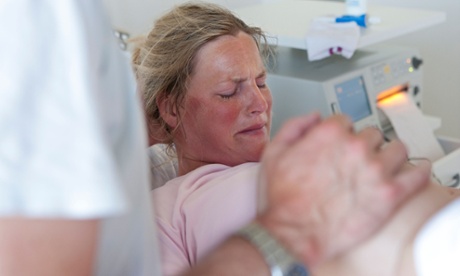
Before I gave birth to my daughter, I had a very specific ideas for how her delivery would go. I wanted as “natural” a birth as possible, so I was seeing a midwife (under the supervision of an OBGYN), I planned to forgo pain medication, my husband and I toured a birth center, and I even eyed the birthing tub in the corner of the room.
A few days later, I was admitted to the hospital and I delivered Layla almost three months early via an emergency C-section. Not everything turns out like you plan – and, lest we forget, pregnancy is not without its dangers to both mother and baby.
Women and midwives have long pushed for increased options for childbirth, and too often hospitals are positioned as the only safe option. So the recent report from the National Institute for Health and Care Excellent (NICE) in the UK which said that “midwife-led care is safer than hospital care” for women with normal, low-risk pregnancies, is great news.
But in our rediscovered enthusiasm for midwives and homebirths, we shouldn’t demonize hospitals and doctors – or the women who choose to be cared for in and by them. I’ve heard too many women over the years talk about hospitals as if they are universally cesspools in which you’ll be forced into a C-section, pressured into unnecessary medical interventions and treated like an object more than a person. But hospitals can and do save women and babies’ lives – one saved mine and saved Layla’s.
Our lives and my pregnancy changed in what felt like an instant: one moment, mine was a low-risk pregnancy and I had carefully thought-out plans for Layla’s birth; the next, I was sick and needed to have a C-section or risk dying and losing my daughter. The hospital birth I never wanted saved our lives – I will never be able to adequately express the gratitude I have for the doctors and nurses (from admitting and maternity to the NICU) who made it possible.
So it pains me to see people I came to know firsthand as knowledgeable, kind and smart often depicted as second-rate or uncaring – and it pains me more that women who might have to make the decisions I did to save my own life and my daughter’s might hesitate having read or heard those depictions.
There are, of course, women who have terrible experiences with hospital births, and the concerns over the increasing C-section rate in the United States (which are more the result of a litigious culture than uncaring doctors) are well-founded. But it feels unwise to actively direct women away from hospitals when, for many of us, hospitals are where we need to receive care. Not every choice needs to be between one good option and one terrible option: both can and should be made as safe and acceptable as possible.
The NICE recommendations say that women with normal, low-risk pregnancies are as safe with midwives and at home as they are at hospitals – but you often don’t know you’re in the midst of a high-risk pregnancy until the situation becomes urgent. And in homebirths in the United States, where real differences exist between certified nurse midwives, certified professional midwives and even midwives operating without licenses, many mothers-to-be are aren’t fully informed or don’t understand even the documented risks.
Women should have access to whatever kind of childbirth care they want and feel is best for their families. But they should also be fully informed without prejudice before making that decision – which includes not vilifying hospitals and doctors as we rightly praise good midwives.

